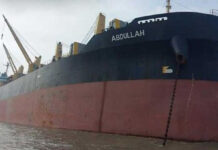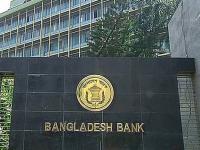
Dread and anxiety over the possibility of a global recession are rising around the world right now. Russia’s invasion of Ukraine in February this year worsened pre-existing supply-side challenges and the volatility in commodity markets caused by the pandemic. The world economy is experiencing a steep downfall with a disrupted supply chain and high inflation due to the twofold effects of these crises. There is very limited policy space for the countries to deal with decelerating GDP growth and accelerating price levels as policies to solve one will make the other worse. Tightening monetary policies to control inflation has increased the borrowing cost, affecting the fiscal spaces of the economies. Specifically, it will heighten the debt of emerging markets and developing economies (EMDEs), which were already facing a surge in debt due to the pandemic. There are more spillover effects of the war as the food and energy prices have risen, going beyond the reach of many people.
Further downside risks may appear through additional US dollar appreciation, more energy and food price shocks, and continuation of contractionary monetary and fiscal policies. Russia could stop trading gas in Europe resulting in output scarcity, or the pandemic could resurge. Moreover, China’s property sector crisis could disturb the domestic banking sector, affecting its growth negatively. Its cross-border impacts along with geopolitical tension could hamper trade, capital flows, and climate policy cooperation.
Bangladesh, as one of the EMDEs in Asia, is significantly prone to these risks. Unlike the recession of 2007-08, global economic factors are now affecting it significantly. There is a widening balance of payment (BOP) deficit and accelerating inflation induced by a surge in imports in the second half of FY22. The point-to-point inflation rate, according to the Bangladesh Bank, is 8.91 percent in October 2022 – higher than the global inflation rate of 8.8 percent (according to the IMF). Moreover, it may not resemble the real scenario as the weight to measure the inflation rate is based on outdated data. Rising commodity prices made the policymakers suppress imports, which disrupted economic activities, inducing slower economic growth projections for the coming year. Both the World Bank and the International Monetary Fund (IMF) have revised their growth projections for Bangladesh: for FY2022-23, IMF’s projection is six percent in October from 6.7 percent in April, and for the World Bank, it is 6.1 percent in October from 6.7 percent in June.
Bangladesh is also seeing a sharp drop in remittance earnings, and increased imports are lowering the BOP by outweighing the export income. Consequently, the foreign exchange reserves dropped to USD 35.808 billion by the end of October 2022, the lowest in the year according to Bangladesh Bank. Policies taken to cope with higher energy prices, such as rolling blackouts and closing of energy-intensive plants, might further aggravate the existing supply constraints. The protective exchange rate management has resulted in an emerging informal dollar exchange market, making policies ineffective. According to a recent World Bank report on South Asia, on the fiscal side, the cost of subsidies for food and fertiliser increased due to higher food and fertiliser prices. Besides, the upward-moving fuel import price raised the fuel subsidy cost, resulting in an increase in fuel price domestically by an average of 50 percent. According to the World Bank’s projection, Bangladesh might face a fiscal deficit of 4.1 percent of its GDP in FY22 and 4.9 percent in FY23.
Besides the global crisis, Bangladesh has its own challenges to overcome. The country’s LDC graduation in 2026 will bring several changes regarding market access and financial incentive programmes. We have a lower export-to-GDP ratio (less than 15 percent) than that of other low- and middle-income countries and comparators (e.g. Vietnam). The export basket is not diversified either, heavily dependent on RMG products. In the case of import, Bangladesh has a protective tariff regime, eroding competitiveness as well as reducing export survival probabilities. Non-tariff barriers and inefficient border processes are hampering our trade, too.

Falling behind its competitors, the financial sector of Bangladesh ranks 95 out of 184 countries according to the IMF’s global financial development index. Bangladeshi companies have limited ability to raise long-term capital as the country’s stock market capitalisation to GDP has been falling since 2015. The pandemic magnified the age-old vulnerabilities of the banking sector, such as low levels of capital, weak governance, asset quality problems, etc. Also, underperforming state-owned banks and state interventions, an underdeveloped and small capital market here are deterring long-term financing for infrastructure, housing, and climate adaptation. Being one of the most climate-vulnerable and disaster-prone countries in the world, Bangladesh has been suffering because of its natural hazard impacts such as high flooding and cyclone risks.
Growing challenges could not outweigh some optimistic signs of our economy completely. The poverty rate in Bangladesh is projected to decline in 2022 and 2023 (World Bank, 2022). The forex reserves, though declining, are not yet at an alarming level. Bangladesh faces a smaller negative effect than its large neighbours since it mainly exports textiles and garments, less sensitive to high-income countries’ demand. Bangladesh got a rebound in migration flows as 600,000 migrants registered for overseas employment in the first six months of 2022, whereas it was 617,000 migrants in 2021. However, most of the remittances coming from them are not reflected in the forex reserves as most of them are coming informally (hundi).
The significant fintech development in Bangladesh has permitted the banks to understand credit risk and issue affordable small business loans in rural communities and sustain credit flows. Most importantly, the major development in transport connectivity – for example, the completion and inauguration of Padma Bridge – will better integrate the cities as well as the domestic and international trade network.
In this scenario, making public expenditure efficient, removing supply chain flaws, rationalising exchange rates, facilitating export, managing lending rate, and increasing competitiveness might be apt ways to prepare for the probable recession.
Israt Hossain is senior research associate at the South Asian Network on Economic Modeling (Sanem).










